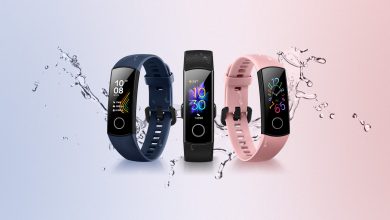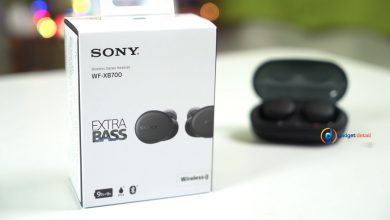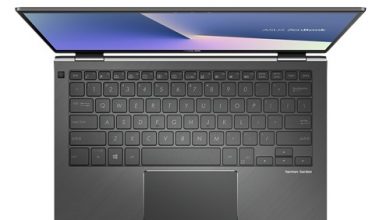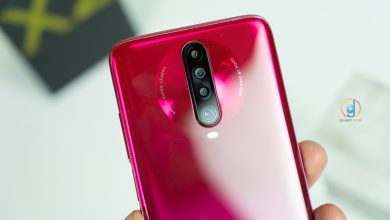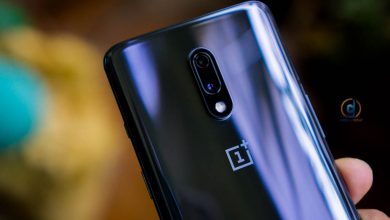Samsung Galaxy SIII review Part 1/3
First of all, a big thanks to my friends who let me use their brand new SGSIII so that I can do a full blown review. Galaxy S III (a.k.a SGSIII) is the most hyped and most awaited smartphone that came out of Samsung’s factories. Thanks to Samsung’s extreme secrecy, the hype and tension went to the levels usually seen before World Cup finals. While the first Galaxy S and the SII cashed in on ‘under the hood stuff’ and price factors, Samsung is going to pitch in SGSIII purely based on might. At 39k, there is no value factor and this phone can only survive if it can really stand apart and stand high. Does it? Lets find out! In this part, we have covered packaging, design and TouchWiz UI sections of this phone. In next part, we will cover the fun and multimedia aspects of the phone while in the third part, we will look at remaining areas. Note: Similar to our N9 review, at the beginning of each section, we will provide a bullet list of pros and cons (for those who are not interested in reading essays).
Package: Nothing more than necessary
The Good:
- Just the right amount of content.
- Looks nice.
- Detachable USB cable.
- In-ear headphones.
The Bad:
- USB OTG cable should’ve been included given how inexpensive these cables are
- Weak charger, takes forever to charge the phone.
- White ear buds bundled with phone that is Pebble blue in color. Not a nice combination
- Samsung should’ve provided a silicone case at least to protect pack panel (given the price and how easily it gets scratches)
Kudos to Apple for reducing the size of packaging. Gone are those days when manufacturers used to bring out these huge boxes filled with crap that people hardly need. Samsung has now followed the same approach with SGSIII. No big box filled with un-necessary stuff. Galaxy SIII comes in a neat and simple rectangular cube like box. First thing that you notice on opening the lid is the gorgeous front side of the phone. Under the compartment hosting the phone, there is a charging adapter with detachable USB cable, headset, some manuals and two extra sets of ear buds. You can find more detail on boxing in our ‘ post here
Build & Design: Monster inside, decent outside
The Good:
- Looks big but feels just right.
- Looks elegant, unlike how it looked in photos.
- Incredibly thin, at 8.6mm.
- Breathtaking display.
- Active noise cancellation.
- Quad core SoC, incredibly powerful GPU, 1GB RAM
- USB OTG
- 2100mAh battery.
The Bad:
- Flimsy back panel is as thin as a wafer and all plastic design
- Should’ve used metallic rim that surrounds the bezel. Matte blue color makes the phone a bit cheap
- No dedicated camera key
- No HDMI slot
- Odd speaker placement and single tiny speaker for a phone that costs 39k is bad design.
Forget about these ‘pebble blue’, ‘Inspired by Nature’, ‘Designed for humans’, ‘Hyperglaze coating’ taglines. Samsung has never been perfect with exterior design. Once you start using the phone, you will understand that design is not the no.1 feature of this phone. This does not mean that SGSIII is ugly. When compared to One X or Xperia S but when compared to earlier designs, this one is much better and in certain angles, it does look premium. Inside though, it is a beast filled with features, features that can be heavily used and features that will need a bit more time. If you are one of those who prefer using a smartphone for atleast 2 years and like utilizing every available feature, look no further and if your top priority is build and design, this may not be the ideal phone for you. A 4.8″ HD resolution Super AMOLED display dominates the front of SGSIII. Without a doubt, this is one of the best smartphone displays I have ever seen. Yes, it is Super AMOLED and yes, it comes with inferior PenTile matrix pixel arrangement but given the high resolution and high ppi, pixelation is not visible to the naked eye (unless you try to rub your eyeball on the display panel). If you really want to know how good the display is, when you get a chance to try a SGSIII, open video player and play the pre-loaded ‘Wonders of nature’ video (change video brightness to maximum from video player settings menu while watching this video). The colors are vibrant and pop out of the screen, brightness levels are very good and I had no problem with using the display during noon under the sun. Touch response is great but I have seen smartphones with better response. I would say that this display should be able to do full justice to the amount of detail that the underlying hardware can generate. I have this feeling though that if Super AMOLED can be this good, what Super AMOLED+ or Super IPS panel will be like? Samsung’s trademark ‘home button’ is centered below the display panel. I did not like the button’s narrow rectangular shape and its placement making it a bit uneasy to use. Menu and return capacitive touch keys are placed on left and right side of ‘home’ key respectively. Long press of ‘home’ takes you to Task Manager while long press of menu key opens ‘Google Search’. Do note that similar to most Samsung Droids these two keys are not visible unless you press on that region (you do have an option to keep the keys visible).  Above the display, there is earpiece, a front facing camera and the usual set of sensors. Good to see that Samsung has added notification LED (top left corner)
Above the display, there is earpiece, a front facing camera and the usual set of sensors. Good to see that Samsung has added notification LED (top left corner) 
 Volume rocker sits on the left side, lock/power button on the right side
Volume rocker sits on the left side, lock/power button on the right side 
 There is a 3.5mm audio jack and second microphone (for active noise cancellation) at the top and primary microphone and microUSB port at the bottom.
There is a 3.5mm audio jack and second microphone (for active noise cancellation) at the top and primary microphone and microUSB port at the bottom. 
 This is one area where I am slightly disappointed. There is no HDMI port which is necessary to connect phone to HDTV for watching movies on big screen (it does support AllShare Play and DLNA using which you can play content on TV wirelessly but these features need to be available on TVs too). The rounder corners and the rim is a bit similar to what we saw on the first Galaxy S except that in this case, the rim is painted with matte blue and it gives an ordinary look to the phone in side angle (this rim is clearly visible in the side shots of the phone from above images) . I guess this is to avoid scratches and damage on fall. A metallic rim would’ve elevated the looks though in my opinion. The back of the phone is where the beauty is (cant believe I said this!). The pebble blue glossy mirror-like back panel/plate with gentle curves and elegant lines gives the phone a premium look. If you want to do show off, you better keep the phone upside down on the table! You need to open back plate to access battery, microSIM card slot and microSD card slots. The back plate is very delicate (which is usual for Samsung smartphones) and be careful when you are removing it. Like I said in first impression, it only takes few minutes to get lot of scratches on the back plate so you better get a silicone case along with the phone.
This is one area where I am slightly disappointed. There is no HDMI port which is necessary to connect phone to HDTV for watching movies on big screen (it does support AllShare Play and DLNA using which you can play content on TV wirelessly but these features need to be available on TVs too). The rounder corners and the rim is a bit similar to what we saw on the first Galaxy S except that in this case, the rim is painted with matte blue and it gives an ordinary look to the phone in side angle (this rim is clearly visible in the side shots of the phone from above images) . I guess this is to avoid scratches and damage on fall. A metallic rim would’ve elevated the looks though in my opinion. The back of the phone is where the beauty is (cant believe I said this!). The pebble blue glossy mirror-like back panel/plate with gentle curves and elegant lines gives the phone a premium look. If you want to do show off, you better keep the phone upside down on the table! You need to open back plate to access battery, microSIM card slot and microSD card slots. The back plate is very delicate (which is usual for Samsung smartphones) and be careful when you are removing it. Like I said in first impression, it only takes few minutes to get lot of scratches on the back plate so you better get a silicone case along with the phone. 
 8mp camera, LED flash and speaker grill are positioned near the top. The camera module is slightly bulged and this avoids the protective glass from getting scratches when the phone is placed on a hard surface. I didn’t like the spkear grill position as once the phone is placed on a hard surface, the loudness reduces drastically. Do note that playing music through this loud speaker would be the last thing you should do with this phone. When it comes to interior, this one is a beast and stands tall. By tall, I mean really really tall. Thanks to a Quad-core processor (LTE variants currently come with a dual-core Snapdragon chip), a screaming GPU and 1GB of RAM, SGSIII has serious amount of power under the hood. This kind of hardware also means that one should be able to upgrade their SGSIII with many iterations of Android (be it official or unofficial). Also, one need not worry about lag while doing heavy multitasking or while playing that latest resource intensive game on SGSIII. The phone that I tested came with 16GB of internal memory, out of which only 12GB (approx) is available to the user. More memory can be added by using microSD card or you can use USB OTG feature and connect a pen drive loaded with data to the phone (you need to purchase USB OTG cable which is microUSB male to USB female connector. Another area that this phone truly excels is in file sharing department and we will cover about this later.
8mp camera, LED flash and speaker grill are positioned near the top. The camera module is slightly bulged and this avoids the protective glass from getting scratches when the phone is placed on a hard surface. I didn’t like the spkear grill position as once the phone is placed on a hard surface, the loudness reduces drastically. Do note that playing music through this loud speaker would be the last thing you should do with this phone. When it comes to interior, this one is a beast and stands tall. By tall, I mean really really tall. Thanks to a Quad-core processor (LTE variants currently come with a dual-core Snapdragon chip), a screaming GPU and 1GB of RAM, SGSIII has serious amount of power under the hood. This kind of hardware also means that one should be able to upgrade their SGSIII with many iterations of Android (be it official or unofficial). Also, one need not worry about lag while doing heavy multitasking or while playing that latest resource intensive game on SGSIII. The phone that I tested came with 16GB of internal memory, out of which only 12GB (approx) is available to the user. More memory can be added by using microSD card or you can use USB OTG feature and connect a pen drive loaded with data to the phone (you need to purchase USB OTG cable which is microUSB male to USB female connector. Another area that this phone truly excels is in file sharing department and we will cover about this later.
User Interface: TouchWiz impresses
The Good:
- TouchWiz nicely complements ICS, tonnes of customization available.
- Inbuilt task manager, data usage monitor, thanks to Android 4.0
- Built in Swype
- Resizable widgets
- Folders
The Bad:
- Pre-loaded apps (contacts, messaging, video player, audio player) are poorly designed (except the S-* apps)
- Nothing else in particular
If there is one thing that I hated most on Samsung’s droids, it is TouchWiz. But when I started using SGSIII, I was quite surprised. Instead of coming in the way (how TouchWiz ruined ICS on SGSII), in SGSIII, Touchwiz UI neatly complements the ICS without diminishing the excellent features that ICS offers. This is how the lock screen looks like and you can customize the wallpaper and shortcuts in the dock. For added security, you can enable face unlock feature or use good old PIN to unlock. A horizontal or vertical swipe will unlock the phone and gives load upto seven fully customizable home screens (minimum of 1 and max of 7). 
 To your home screens you can add the Widgets, application shortcuts. Long press on a home screen gives you option to customize homescreens and you can move widgets and apps between homescreens. This is how my homescreen setup is:
To your home screens you can add the Widgets, application shortcuts. Long press on a home screen gives you option to customize homescreens and you can move widgets and apps between homescreens. This is how my homescreen setup is: 





 If you want to use more widgets and yet want to have access as as many app shortcuts, having folders instead of app shortcuts helps in a big way. A pinch-in gesture on any home screen gives a view of all home screens as shown in far right image below and this is where you can change home screen layout and also remove unwanted home screen by dragging to the waste bin icon at the bottom. You can also change the app shortcuts in the bottom bar and do note that the ‘Apps’ shortcut cannot be removed as it is the only way to go to ‘apps’ menu.
If you want to use more widgets and yet want to have access as as many app shortcuts, having folders instead of app shortcuts helps in a big way. A pinch-in gesture on any home screen gives a view of all home screens as shown in far right image below and this is where you can change home screen layout and also remove unwanted home screen by dragging to the waste bin icon at the bottom. You can also change the app shortcuts in the bottom bar and do note that the ‘Apps’ shortcut cannot be removed as it is the only way to go to ‘apps’ menu. 

 While you are in home screen, clicking on menu key (next to home button) gives you option to edit the homescreen, create folders, open OS settings menu or Search application while long press on power/lock key gives you option to switch profiles (silent mode, general mode), turn airplane mode on/off, turn data network mode on/off and to power off/restart the device. Clicking on ‘edit’ gives you option to add apps/widgets to homescreens or to change wallpaper for homescreens and lock screen. A long press on ‘home’ key opens task manager and you can kill the tasks by doing a right swipe on an app listed in the task manager. Please refrain from using 3rd party task managers as they do more harm than good and also have negative effect on battery life.
While you are in home screen, clicking on menu key (next to home button) gives you option to edit the homescreen, create folders, open OS settings menu or Search application while long press on power/lock key gives you option to switch profiles (silent mode, general mode), turn airplane mode on/off, turn data network mode on/off and to power off/restart the device. Clicking on ‘edit’ gives you option to add apps/widgets to homescreens or to change wallpaper for homescreens and lock screen. A long press on ‘home’ key opens task manager and you can kill the tasks by doing a right swipe on an app listed in the task manager. Please refrain from using 3rd party task managers as they do more harm than good and also have negative effect on battery life. 



 Samsung has included some beautiful wallpapers and live wallpapers and you can also use your pictures for wallpaper.
Samsung has included some beautiful wallpapers and live wallpapers and you can also use your pictures for wallpaper. 

 Samsung has included fair amount of applications. Most of these applications come with widgets and the more applications you install, the more widgets you have. Some of these widgets seem to be un-necessary though (like 1×1 gmail icon).Widgets and applications are now part of one list but are separated by tabs as shown below. Application list layout is very much similar to what we saw in all Samsung Galaxy devices, with iPhonesque icon grid based pages with horizontal swiping. Application screens and Widgets share the same pinch-in gesture to get list of all the screens as shown below. To place application shortcut or a widget on the homescreen, you have to touch and hold the shortcut/widget to pickup one and then place them on the homescreen of your choice. If you want to see what all applications you have downloaded, you can click on ‘Download’ icon in the top bar and you get the list of ‘Downloaded Apps’
Samsung has included fair amount of applications. Most of these applications come with widgets and the more applications you install, the more widgets you have. Some of these widgets seem to be un-necessary though (like 1×1 gmail icon).Widgets and applications are now part of one list but are separated by tabs as shown below. Application list layout is very much similar to what we saw in all Samsung Galaxy devices, with iPhonesque icon grid based pages with horizontal swiping. Application screens and Widgets share the same pinch-in gesture to get list of all the screens as shown below. To place application shortcut or a widget on the homescreen, you have to touch and hold the shortcut/widget to pickup one and then place them on the homescreen of your choice. If you want to see what all applications you have downloaded, you can click on ‘Download’ icon in the top bar and you get the list of ‘Downloaded Apps’ 






 Coming from Windows Phone, I had a hard time in getting used to the onscreen keypad. It is not that the keypad is bad. It is good and it has Swype input but I would suggest you to get Swiftkey instead as they will be much much better than the default keypad. There is a dedicated voice key in the keypad to use for voice input.
Coming from Windows Phone, I had a hard time in getting used to the onscreen keypad. It is not that the keypad is bad. It is good and it has Swype input but I would suggest you to get Swiftkey instead as they will be much much better than the default keypad. There is a dedicated voice key in the keypad to use for voice input. 

 Samsung has made heavy modifications to the notification bar to make it more functional. From the notification bar you can:
Samsung has made heavy modifications to the notification bar to make it more functional. From the notification bar you can:
- Turn Wi-FI/GPS/power saving/Mobile data/Bluetooth/Sync On and off
- Set or unset driving mode
- Enable/disable screen rotation
- Mute/unmute sounds
- Enable/disable notifications
- Control media playback (radio/video/music)
- Clear all notifications in one shot (by clicking on ‘clear’ button)


 If you want to know why people say Android can be heavily optimized, have a look at settings section. This is where you get to play with the OS and thanks to Samsung added huge amount of features/sensors/connectivity options to the phone, the settings section is massive! I have added couple of images of this section. Do note that these are only a tip of the iceberg.
If you want to know why people say Android can be heavily optimized, have a look at settings section. This is where you get to play with the OS and thanks to Samsung added huge amount of features/sensors/connectivity options to the phone, the settings section is massive! I have added couple of images of this section. Do note that these are only a tip of the iceberg. 












 You can use the built in file manager to access and share files but do not expect too much out of this application. File Manager home gives you a list of mounted storage volumes (be it onboard memory or microSD memory or USB OTG memory) and you can set the file manager to show or hide hidden files, file extensions and you can also set home directory (the default directory to open when you access file manager).
You can use the built in file manager to access and share files but do not expect too much out of this application. File Manager home gives you a list of mounted storage volumes (be it onboard memory or microSD memory or USB OTG memory) and you can set the file manager to show or hide hidden files, file extensions and you can also set home directory (the default directory to open when you access file manager). 

 On clicking in menu, you get options to edit/move/copy/delete folders and to share files while long press on a file/directory gives you various options as seen in the image below (middle). Sharing can be done using various protocols/applications (depends on apps that are installed) as seen in right most image below
On clicking in menu, you get options to edit/move/copy/delete folders and to share files while long press on a file/directory gives you various options as seen in the image below (middle). Sharing can be done using various protocols/applications (depends on apps that are installed) as seen in right most image below 

 Overall, for the first time, I actually liked Touchwiz UI and once I got used to the toyish looking icons, it turned out to be very functional. I will cover few more features of this UI later in the review.
Overall, for the first time, I actually liked Touchwiz UI and once I got used to the toyish looking icons, it turned out to be very functional. I will cover few more features of this UI later in the review.

